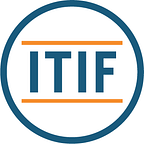Wearable Respiratory Rate Monitoring Glove: A Breakthrough in Childhood Pneumonia Detection in Bangladesh
This post is one of a series in the #Innovate4Health policy research initiative. #Innovate4Health is a joint research project by the University of Akron IP Center (UAIP), the Information Technology & Innovation Foundation (ITIF), and the Geneva Network. This project highlights how intellectual-property-driven innovation can address global health challenges. If you have questions, comments, or a suggestion for a story we should highlight, we’d love to hear from you. Please contact UAIP Research Fellow Douglas Park at dpark@uakron.edu for more information.
Krishna Sankya Talluri
Pneumonia is a curable and mostly preventable lung disease, with a mortality rate of only 1 to 3 per 100,000 children in high-income countries, and generally is not perceived as a serious public health concern. Pneumonia nonetheless has a disproportionate effect on children in low- and middle-income countries (LMICs) because pneumonia often goes undiagnosed and untreated until children in those countries are already severely ill. In 2019 alone, pneumonia accounted for 14% of children’s deaths globally, with most of those deaths occurring in economically weaker communities.
To address this disparity, Bangladeshi scholar Prof. Sadeque Reza Khan has led a multinational team to devise a convenient, versatile, and affordable device that a user can literally wear in the palm of their hand to diagnose cases of childhood pneumonia. This device could significantly improve early diagnosis and treatment in countries such as Bangladesh, where access to larger, more expensive diagnostic and monitoring equipment is very limited.
Bangladesh is a quintessential example of an LMIC that has consistently struggled to curb the impact of pneumonia. In 2018 alone, pneumonia claimed the lives of more than 12,000 Bangladeshi children, accounting for approximately 13% of all mortalities among children under 5 years of age.
A large part of the problem with identifying and treating children with pneumonia early enough is the lack of reliable diagnostic equipment. In low- and middle-income countries (LMICs) like Bangladesh, health care providers must instead rely on much more subjective clinical indicators such as coughing and increased respiratory rates.
These care providers often must measure a child’s number of breaths per minute manually using watches, timers, or abaci. Measuring respiratory rate visually demands intense focus and can be particularly challenging if the child is moving, crying, or breathing rapidly — all of which are likely in a sickly child.
To tackle this issue, Heriot-Watt University’s Prof. Sadeque Reza Khan and his dedicated team of researchers have developed a “Multi-Modal Portable Respiratory Rate Monitoring Device for Childhood Pneumonia Detection Device,” a small and easily portable diagnostic device that can be worn as a glove. This project is groundbreaking because it does not require expensive equipment such as x-rays or blood tests for diagnosis and allows doctors to treat childhood pneumonia earlier and more successfully.
The rechargeable prototype of the diagnostic device comprises two primary components: simple hardware and a cloth glove. The glove has textile electrodes on the palm and fingertips and a printed circuit board on the back. The textile electrodes measure bio-impedance caused by respiration while the accelerometer monitors the patient’s breathing.
The device transmits this data to a mobile app via Bluetooth, allowing healthcare professionals to assess the data remotely. The electronic components are even detachable, allowing the user to wash the glove separately or even replace it altogether. This flexibility ensures reusability and helps prevent infection.
Initial tests of the glove design by the University of Dhaka in Bangladesh have successfully demonstrated high accuracy as well as capacity, with battery life allowing uses up to 60 to 70 times a day. The research team next plans to expand the device’s capabilities to other diagnostic methods such as electrocardiograms.
Dr. Khan and his team do not yet have published patents on this device, but it is likely that the possibility of patent rights was essential to securing funding for the project. The University of Edinburgh, this project’s primary sponsor and a staunch supporter of knowledge sharing and IP licensing of IP in less wealthy nations, also stresses the importance of commercializing and distributing new health-related technologies such as Dr. Khan’s diagnostic glove.
Though human wellbeing is an essential motivation, investors like the University of Edinburgh recognize the need to secure substantial investments in demonstrating the safety and efficacy of new technologies before they can be marketed in developing countries. Patent rights provide that security and offer development and marketing leverage for new products.
One option for securing patent rights is the Patent Cooperation Treaty (PCT) system, but the PCT relies on individual nations having robust domestic IP systems. Though it is not yet a member of the PCT, Bangladesh has been striving to position itself globally as an IP-rights-friendly nation. The recent Bangladesh Patent Act of 2022 is emblematic of these efforts.
The Act is designed to ensure compliance with the Trade-Related Aspects of Intellectual Property Rights (TRIPS) Agreement and other international standards. For example, the Bangladesh Patent Act extended the patent protection period from 16 years to 20 years, consistent with terms in most nations. It also establishes a concrete judicial system for handling patent cases and a comprehensive list of relief options for patent holders, improving the administrability and efficacy of patent rights.
The average cost to process a patent in Bangladesh, including processing and attorney’s fees, sits between $1,000 and $3,000 USD for most inventions. This is significantly cheaper than costs in the US and UK, where filing costs average at $10,000, making Bangladesh an attractive destination for inventors looking for economical patenting solutions.
It is highly likely that by obtaining patent rights Prof. Khan and his team can continue to innovate, attract more investments, and promote wider dissemination. With endless possibilities ahead, “Multi-Modal Portable Respiratory Rate Monitoring Device for Childhood Pneumonia Detection” has the potential to be a groundbreaking innovation, revolutionizing healthcare and improving the lives of millions in Bangladesh and beyond.
